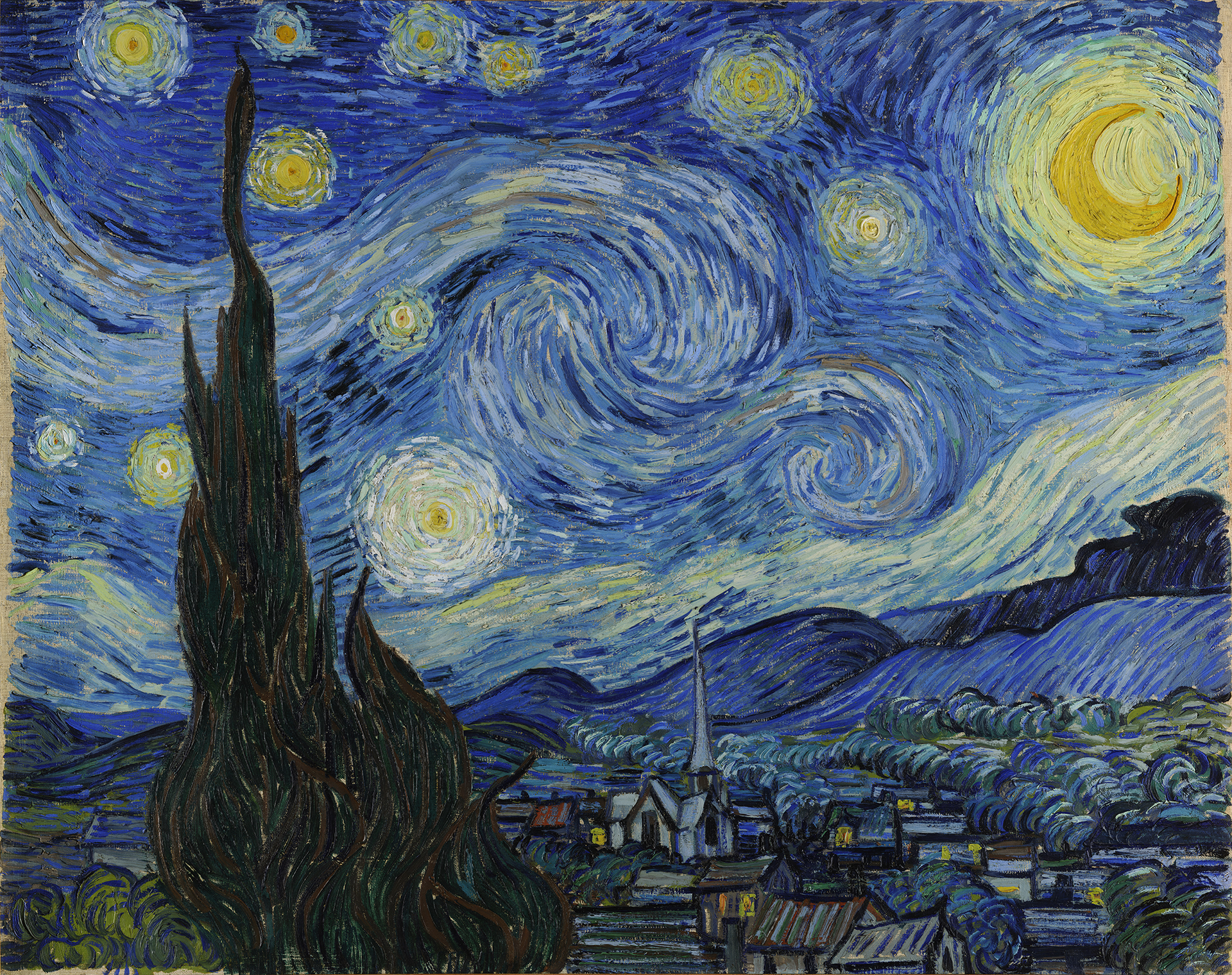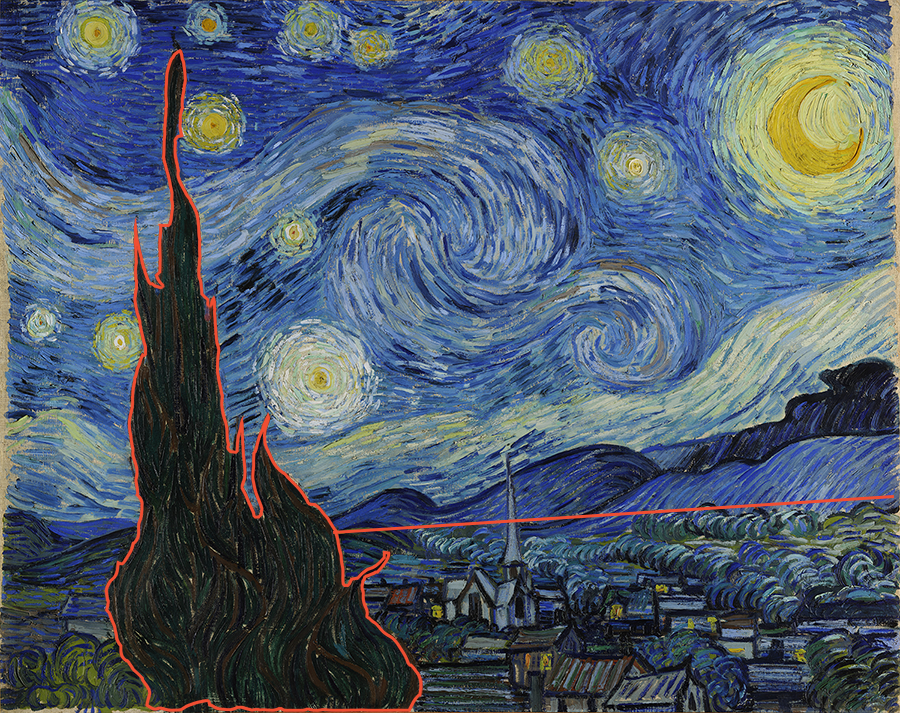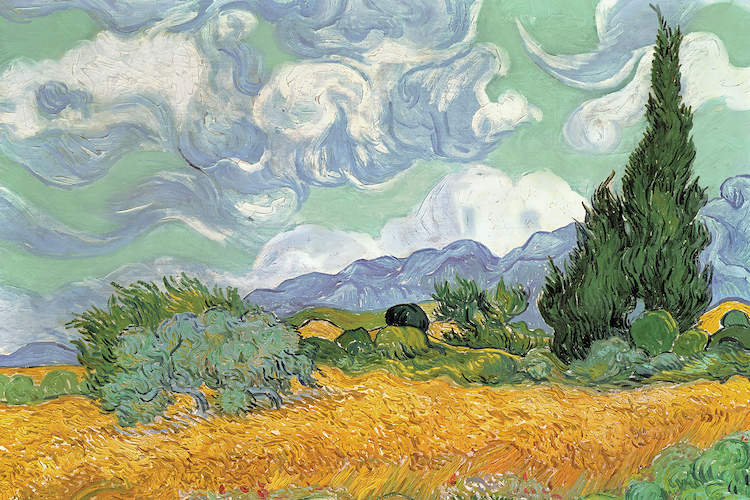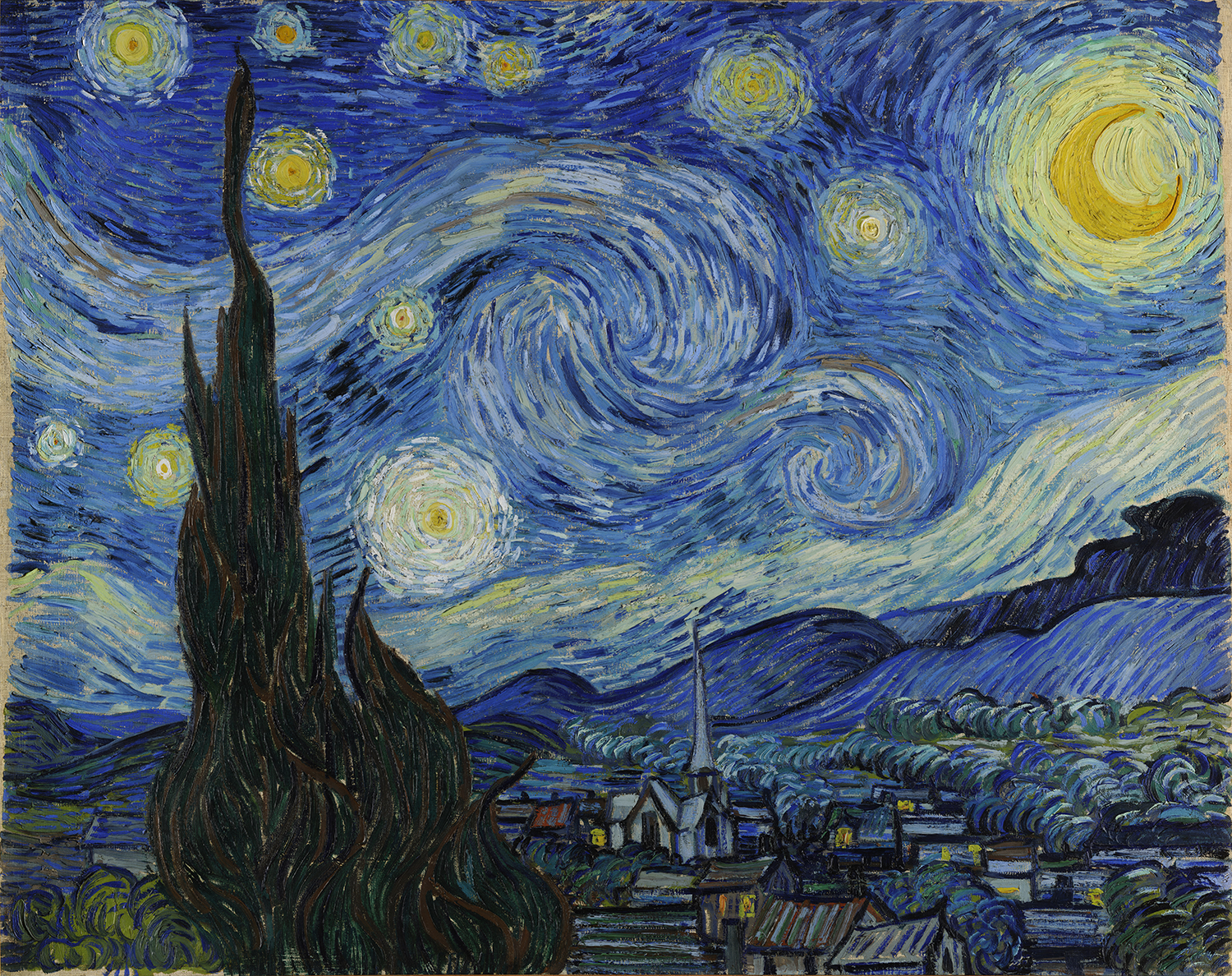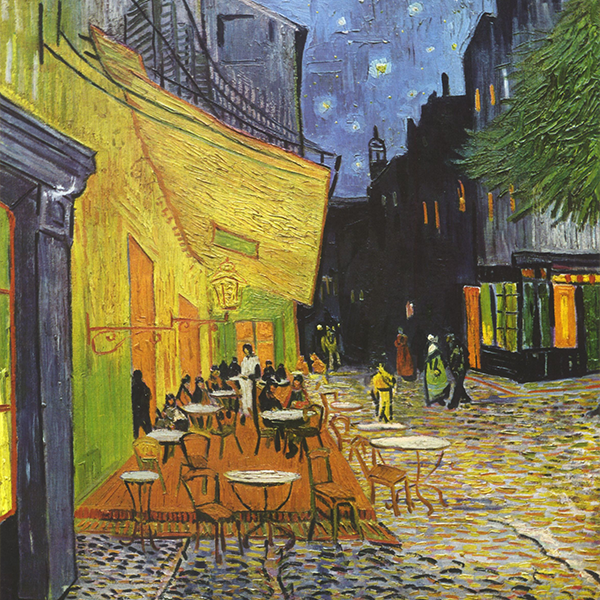Starry Night
Vincent Van Gogh, 1889, Saint-Rémy-de-Provence
When Don McLean wrote his famous 1971 song “Vincent”, he opened with the line “Starry Starry Night”. This was a direct reference to the 1889 painting “The Starry Night” by Dutch post-impressionist Vincent Van Gogh. Among the best loved paintings of Van Gogh, “The Starry Night” is today by many considered his greatest accomplishment.
Van Gogh painted “The Starry Night” while facing serious suffering on accounts of his sanity. Van Gogh thus at the time of the painting had committed himself at the hospital at Saint-Paul-de-Mausole, about 30 kilometers from Arles in France. This commitment came in the aftermath of the 23rd December 1888 incident in which Van Gogh cut off part of his own left ear. Due to this circumstance, Van Gogh did not have the opportunity to go out and observe new potential subjects for paintings very often, and he therefore often painted from memory as is the case with “The Starry Night.
Starry Night Composition
The composition of the painting can be divided into three main parts – the sky above, the village below and the cypress tree to the left somehow connecting the two. Van Gogh’s night sky is here a ranging inferno, as clouds are swirling across the sky, beholden with energy, while the clear orbs of the stars and the moon light up this scene.
The way the clouds swirl and interact ensures that the viewer’s eyes continuously move around the painting, following the obvious movement within the painting. Below this field of energy, we find a stark contrast in the quiet village below, which offers some stability in the painting. While often considered to be the village of Saint Remy, it is actually fictional, with church spires reminiscent of Van Gogh’s own native Netherlands. Tying the raging sky and the quiet village together, we find the large cypress tree in the left of the painting.
“The first four canvases are studies without the effect of a whole that the others have . . . The olives with white clouds and background of mountains, also the moonrise and the night effect, these are exaggerations from the point of view of arrangement, their lines are warped as that of old wood.”
Cypress Trees and Van Gogh
Van Gogh painted cypress trees on numerous occasions in his work and the special almost flaming shape of the tree gives it an ominous quality that serves well to connect the two contrasting worlds in the painting. The identification of the artist himself with the cypress as a motive also enables us to place him in the role of the tree, stretching between the roaring inferno of his mind, with all its light and inspiration, and the quieter and stable world below that he is also a part of.
Van Gogh was himself not initially thrilled with the painting. As he wrote to his brother Theo in a letter:
A Legacy
However, despite his own initial reservations to the painting, the roaring sky swirling over the quiet village provided plenty of inspiration for others. From Anne Sexton’s poem “The Starry Night” to Giancarlo Scalia’s piano composition “The Starry Night”, to Neil DeGrasse Tyson in general, the inspiration provided by the painting has been universal and massive. “The Starry Night” is a true artistic master piece by Van Gogh that offers both a view of a night sky and a window into the artist’s soul.
The original “The Starry Night” can be seen at the Museum of Modern Art in New York City or you can have a hand painted reproduction directly on your wall. Either view should inspire viewers as The Starry Night draws them in.

